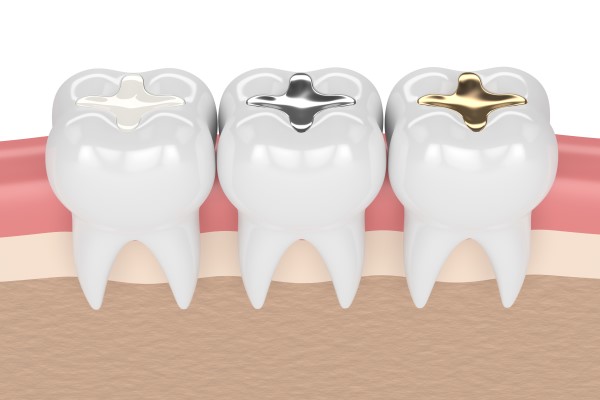Dental Fillings: A Dental Restoration to Treat Cavities

The term dental restoration refers to a number of procedures used to repair or restore function and aesthetics to teeth that are in bad shape, whether it be due to cavities, imperfections, or abnormalities. Modern-day dentistry has allowed for the evolution of many different types of dental restorations, including dental fillings, which are typically the standard treatment for repairing teeth that are in poor condition.
Dental fillings to treat cavities
Below is a quick overview of dental fillings, which are a common dental restoration used to treat cavities. This information can be helpful to review when preparing to undergo a filling procedure.
What exactly is a dental filling?
Dental fillings are a restorative procedure used to treat mild to moderate cavities. The procedure is exactly as it sounds: A dentist physically fills a cavitied tooth with a special filling material.
Dental filling materials may include silver amalgam, gold, ceramic, or composite resin. Gold is very strong and durable, however, it does draw attention to the mouth. Silver amalgam has historically been the standard material for dental fillings, although it has come under controversy in recent years due to the fact that it may contain mercury. Ceramic consists of porcelain materials, which are white in color and very strong. Ceramic has become a popular choice as it blends in with the other teeth and remains reliable. Composite resin, however, is usually used as a temporary dental restoration fix. Baby teeth are often treated with composite resin as the teeth are not permanent, and will later be replaced.
The cavity treatment process
When a dental restoration is needed to repair a cavity, a dentist attempts to use a filling first. Fillings are one of the easiest dental restoration procedures to perform. Additionally, it is easy on the tooth, as is not always the case with other dental restoration options. Outlined below are the steps of a dental filling procedure, as it relates to treating cavities.
- The patient will be numbed and may also be given the option to receive nitrous oxide, also known as laughing gas. Both of these agents can be used in order to make the patient comfortable during the dental restoration procedure.
- Once the patient is comfortable, the dentist will use a dental drill to remove the infected parts of the tooth. This part can induce some discomfort, which is why numbing agents are used.
- After the infected parts of the tooth have been removed, the dentist will quickly clean the tooth out. Cleaning is necessary in order to remove any left behind debris that may cause problems in the future.
- To finish, the dentist will fill the tooth with the patient's preferred material. Once filled, the dental restoration is complete.
Are you in need of a dental restoration?
When looking for further information on dental restorations or fillings, it is best to consult directly with a general dentist who can provide specific information. Patients can ask questions or go over concerns they have about certain procedures. Additionally, an evaluation can be done in order for the dentist to determine the most appropriate dental restoration.
Request an appointment here: https://www.providencefamilydentistry.com or call Providence Family Dentistry at (678) 496-7021 for an appointment in our Mableton office.
Check out what others are saying about our dental services on Yelp: Dental Restorations in Mableton, GA.
Recent Posts
Losing a tooth can be disconcerting. Thankfully, there are multiple dental restoration options to replace the missing tooth and restore dental functions. Read on to learn about available options. The choice ultimately boils down to the patient's oral condition and preferences. A dentist will recommend the proper treatment following a dental evaluation.The following are common…
Extensive dental problems may lead to a dentist suggesting a full mouth dental restoration as the treatment option. Anyone who hears this may wonder what it is and how the whole process works. Knowing those details can help take some of the fear and anxiety away from the situation and make it more comfortable for…
Looking into your restorative dentistry options? Teeth grinding (also known as bruxism) is common, affecting many people worldwide. This condition can lead to issues such as chipped teeth, cracked teeth, chronic headaches, TMJ disorder, and trouble sleeping. When tooth damage occurs as a result of teeth grinding, restorative dentistry is necessary to repair the areas…
A smile makeover can completely transform your oral cavity and give you the confidence and self-assurance that you have been seeking. However, you might be a bit nervous after getting your smile makeover: After all, what happens if you ruin the results? The good news is that the effects of a smile makeover are built…


